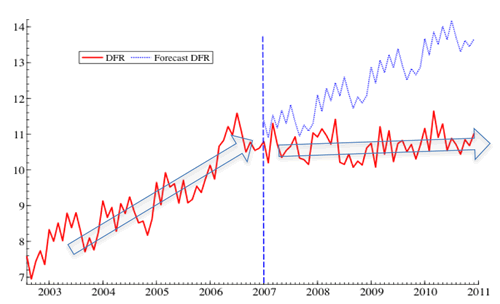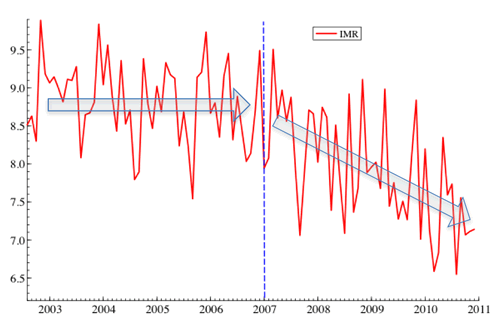New Study: Group Meditation Practice Helps Reverse Drug-Related Death Rate
In recent years, drug-related deaths have become a national public health crisis, fueled by a surge in rates of unintentional drug overdoses from prescription painkillers and anxiety drugs. These fatalities surpassed motor vehicle accidents as a cause of death in 2009 and reached 47,000 a year nationwide as of 2015.
Now Institute research scientists Dr. Michael Dillbeck and Dr. Kenneth Cavanaugh have proposed a solution that may slow or reverse this alarming trend. In new research just published in the social science journal Sage Open, they report that during the years 2007–2010, when the size of a large US group practicing the Transcendental Meditation® and TM-Sidhi® program reached a threshold predicted to affect national trends, the rate of drug-related deaths dropped by 30.4% relative to the baseline average 2002–2006.
This study of stress-related public health indicators also found that during the same period the rate of infant mortalities was reduced by 12.5%.
The researchers estimate that 26,425 drug-related fatalities and 992 infant deaths were averted due to these significantly reduced trends in fatality rates. The probability that the reduced rate trend for drug-related fatalities could simply be due to chance was 3.1 in 10 billion and for rates of infant mortality, less than 2.1 in 100,000.
These groundbreaking research outcomes were announced in March 2017 in a press release from EurekAlert!, a well-respected online science news service. The study itself was published by Sage Open and is the third of four such studies conducted by Dr. Dillbeck and Dr. Cavanaugh.

Figure 1. Drug-related fatality rate 2002–2010
Monthly drug-related fatality rate (DFR) for 2002–2006 baseline and 2007–2010 intervention periods (red line) with DFR forecast (blue dotted line) based on baseline trend. Fluctuations around the trend are largely due to seasonal variation.

Figure 2. Infant mortality rate 2002–2010
Monthly infant mortality rate (in red) for 2002–2006 baseline and 2007–2010 intervention periods. Fluctuations around the trend are largely due to monthly seasonal variation
During the period 2007 to 2010, the size of the meditation group located at Maharishi International University in Fairfield, Iowa, was above or near 1,725 participants, the size predicted to have a positive influence on the US quality of life. This predicted threshold represents the square root of 1% of the US population.
Eighteen peer-reviewed articles have now been published validating the prediction by Maharishi Mahesh Yogi, the founder of the Transcendental Meditation and TM-Sidhi program, that a TM-Sidhi group of this size would lead to reduced societal stress, as reflected in reduced crime, violence, accidents, and illness, and increased positive trends in society.
Earlier published research by Dr. Dillbeck and Dr. Cavanaugh on the societal impact of this large meditation group has shown significant reductions in violent crime and homicide rates and in accidental fatality rates across the US.
The Invincible America Assembly—America’s first and largest permanent group practicing the TM and TM-Sidhi program together—began in July 2006 with less than 700 participants and rose rapidly by January 2007 to exceed the required number of 1725, the square root of one percent of the US population at that time. The group remained above or near this threshold from 2007 through 2010. Since then scientific research has repeatedly confirmed the striking long-term positive effects of this large coherence-creating group on national trends during this period. Earlier media coverage of these research findings, including very positive reports by Reuters and the American Association for the Advancement of Science, has now reached hundreds of newspapers and journals around the world.
Institute director Dr. John Hagelin and the Institute staff continue to work every day to promote the Assembly and to increase the number of participants. Dr. Hagelin has frequently commented that the profound coherence generated in national consciousness by the Assembly is the foundation for the Institute’s success in bringing all these peace-creating programs to the public.


